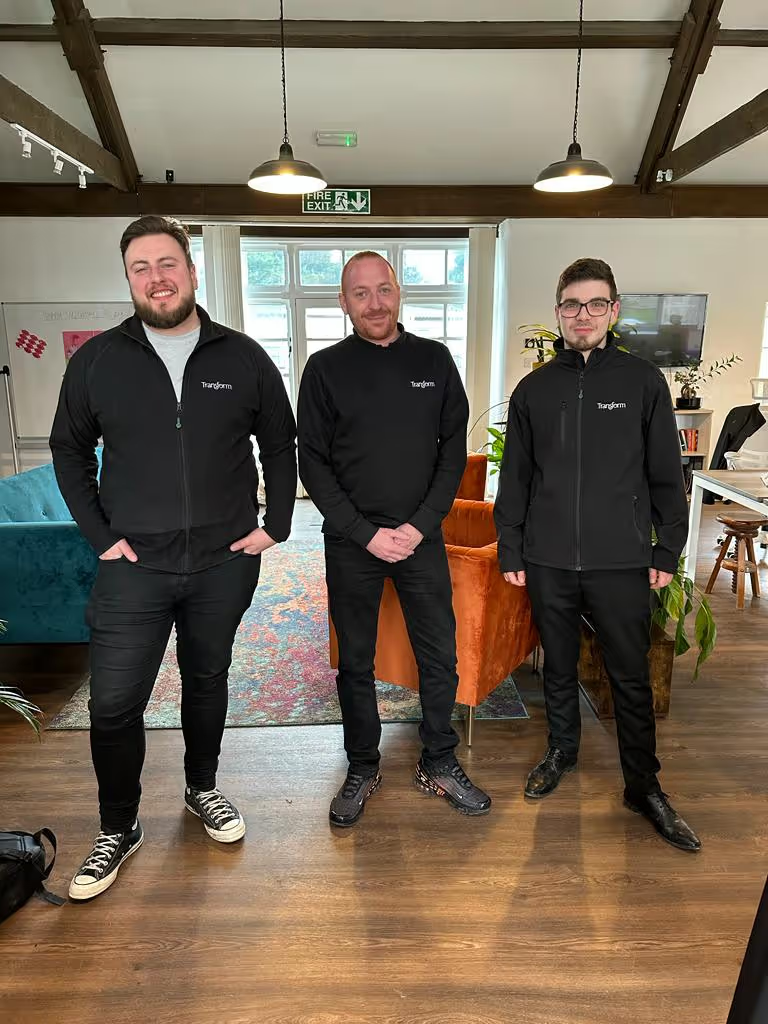Blog

February 2023
Whether a digital display ad or a printed magazine, design choices impact the environment in several ways. As creatives, it’s important for us to consider the true cost of our designs and advise clients how best to reduce these, for the good of both planet and pocket. As discussed in our blog ‘Is there a future for print marketing?’, though people often believe that going paperless is more sustainable, the carbon footprint of the digital world doesn’t always outweigh that of print.

How can businesses ensure that their graphic designs are as sustainable as possible? Here, we learn more from Transform’s Graphic Designer Georgine Tucker.
Sustainable graphic design is the growing movement to reduce the negative impact design may have on the environment. It considers the whole process: from creation to the final product, its use of resources, and any waste. These may be obvious, such as the origin of paper used in printing the design, or more subtle, such as the carbon footprint generated through digital sources, for example.
Although it may not seem so at first sight, graphic design has a lot of influence in the sustainable practices of any brand. With the Paris Agreement requiring all United Nations to reduce emissions to 45% by 2030 and net zero by 2050, it’s important for brands to consider all aspects of their business to help achieve this. While sustainable graphic design is not the complete solution, it’s a vital step forward in helping businesses achieve their ESG targets.
Aiming to use resources efficiently and reduce waste is key to sustainable graphic design. This includes:
This less-is-more approach not only helps with the environment. It strengthens your brand messaging and puts your sustainability values into practice.
Support ethical businesses that actively protect the environment – or become one yourself!
Choose a printer who sources environmentally friendly paper and ink. Many printers now use FSC (Forest Stewardship Council) certified paper, which is sourced from forests that are independently audited to ensure they meet the FSC’s principles and are managed with nature, as well as humans, in mind.

For production of Transform’s team apparel, we used I Dress Myself, a local, sustainable t-shirt printing and embroidery company. They use vegan, non-toxic inks, plastic-free embroidery and carbon offset their supply chain – all while creating high-quality products that we’re very pleased with.
For your online impact, create a low-impact website that utilises cloud hosting and reduces page load speed. The faster a user can achieve their goal, the less time they spend on your website. So, as well as creating a good user experience, you also reduce the amount of energy they use.
Read more on low-impact web development from Noughts and Crosses.
With sustainable design, you only design and create what is truly needed, which results in a cost saving.
In addition, companies adopting sustainable practices often receive positive customer and employee interactions. This can lead to increased sales, continued brand loyalty and higher employee retention. For consumer brands, this is particularly important, as shoppers have grown more environmentally conscious. According to Deloitte, 59% have reduced the number of new products and goods they buy, while 40% actively shop from brands with environmentally friendly practices or values.

Carlos Miranda, Co-founder of three B Corps including Lightful
Promoting ethical business practices is as important as protecting the environment. By creating sustainable designs and communicating your values and practices, your brand can become a leading voice in sustainability. This educates your customers and your industry, contributing to further change.
The importance of sustainable graphic design cannot be overstated. This approach not only helps reduce strain on the planet, but also supports ethical business practices, which improves the lives of clients and employees alike. By embracing sustainable practices, it is possible to be more mindful with your graphic design and help protect our world for years to come.
Interested in learning more? Take a look at our recommended extra reading below:
We're always up for a coffee and conversation.
Fill in the form, drop us a line at info@transformcomms.co.uk, or call us on 01225 863846. Better yet, drop in to our converted barn and film studio near Bath and Bristol.
Let’s transform.
Together.